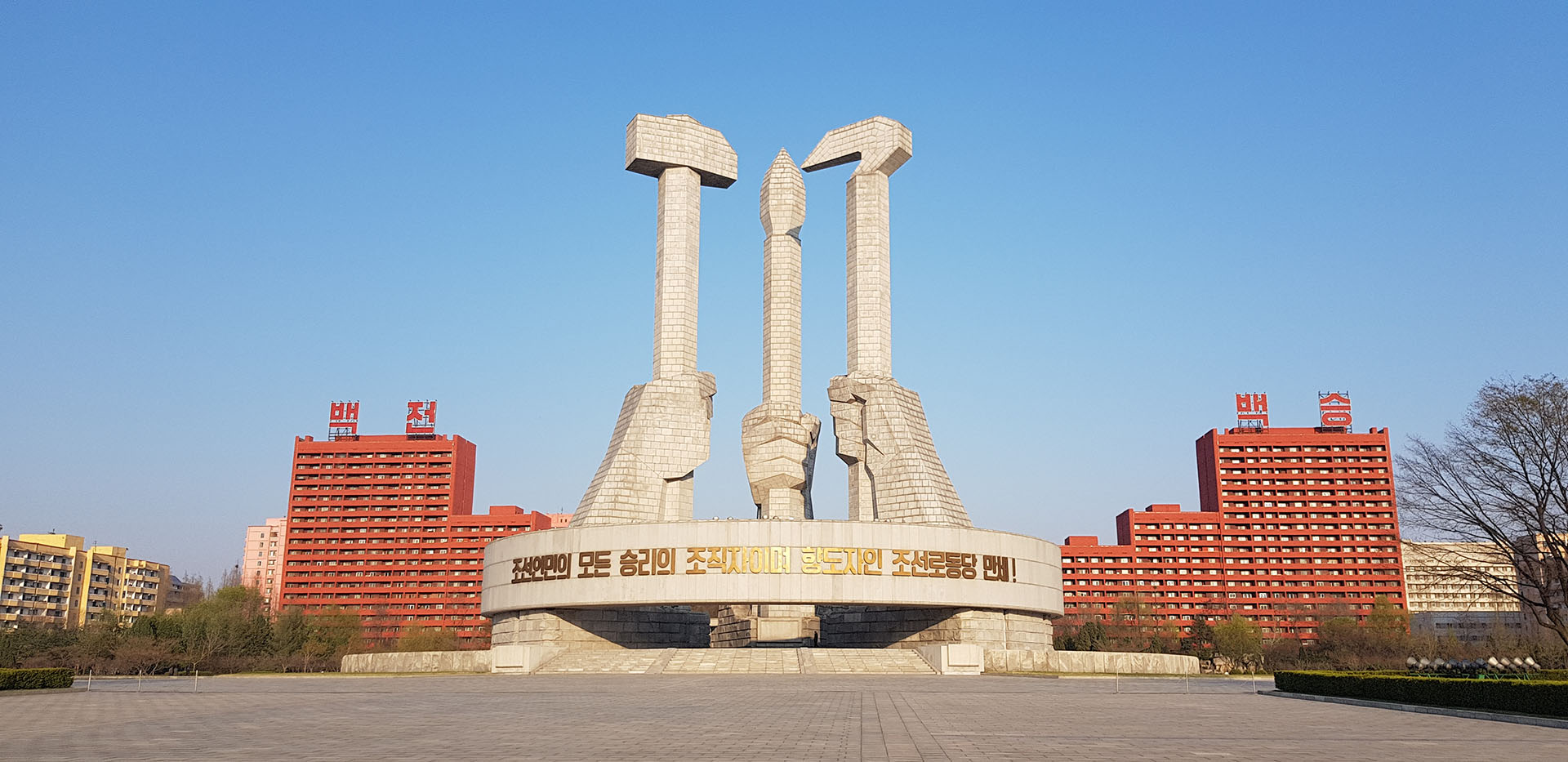mNo edit summary Tag: Visual edit |
(History) Tag: Visual edit |
||
| Line 1: | Line 1: | ||
[[File:WPK statue.png|thumb|The paintbrush used in addition to the [[hammer and sickle]] by the [[Workers' Party of Korea]] represents artists and [[Intellectual|intellectuals]]]] | [[File:WPK statue.png|thumb|The paintbrush used in addition to the [[hammer and sickle]] by the [[Workers' Party of Korea]] represents artists and [[Intellectual|intellectuals]]]] | ||
'''Art''' is a creative activity that occurs in a specific social and [[Historical materialism|historical context]]. It can be divided into performing arts, including music, theater, and dance; and visual arts, including drawing, film, painting, photography, and video.<ref name=":0">{{Web citation|author=Richard Clarke|newspaper=[[MR Online]]|title=What do Marxists have to say about art?|date=2023-12-28|url=https://mronline.org/2023/12/28/what-do-marxists-have-to-say-about-art/|archive-url=https://web.archive.org/web/20240106012626/https://mronline.org/2023/12/28/what-do-marxists-have-to-say-about-art/|archive-date=2024-01-06}}</ref> | '''Art''' is a creative activity that occurs in a specific social and [[Historical materialism|historical context]]. It can be divided into performing arts, including music, theater, and dance; and visual arts, including drawing, film, painting, photography, and video.<ref name=":0">{{Web citation|author=Richard Clarke|newspaper=[[MR Online]]|title=What do Marxists have to say about art?|date=2023-12-28|url=https://mronline.org/2023/12/28/what-do-marxists-have-to-say-about-art/|archive-url=https://web.archive.org/web/20240106012626/https://mronline.org/2023/12/28/what-do-marxists-have-to-say-about-art/|archive-date=2024-01-06}}</ref> It is part of the [[superstructure]] of society and reflects society's [[Relations of production|social relations]].<ref name=":1">{{Web citation|author=John Molyneux|newspaper=Rebel News|title=The Dialectics of Art|date=2019-07-15|url=http://www.rebelnews.ie/2019/07/05/the-dialectics-of-art/|archive-url=https://web.archive.org/web/20230929002432/http://www.rebelnews.ie/2019/07/05/the-dialectics-of-art/|archive-date=2023-09-29}}</ref> | ||
== History == | == History == | ||
Art | Art existed as early as [[Primitive communism|primitive communal]] times as shown by the Chauvet and Lascaux cave paintings.<ref name=":1" /> | ||
== | Throughout the [[Feudalism|feudal]] era in [[Europe]], art was relatively static and heavily controlled by the [[Christianity|church]].<ref name=":1" /> Art first became a [[commodity]] under the Medici dynasty during the Italian [[Renaissance]] when movable canvasses appeared in addition to the older art on church walls and altars.<ref name=":0" /> | ||
Beginning in the mid-19th century, many art movements emerged over a short period of time due to the [[Industrial Revolution]] and development of [[capitalism]].<ref name=":1" /> | |||
== Bourgeois art == | |||
During the 1950s and 1960s, the [[Central Intelligence Agency|CIA]] and its front group, the [[Congress for Cultural Freedom]], funded abstract expressionist artists such as [[Willem de Kooning]], [[Jackson Pollock]], and [[Mark Rothko]].<ref name=":0" /> | |||
== Socialist realism == | |||
=== Socialist realism === | === Socialist realism === | ||
The [[Russian revolution of 1917|Russian Revolution]] led to socialist realism and [[constructivism]], which used art to serve the people. In [[Cuba]], [[Socialist Federal Republic of Yugoslavia (1945–1992)|Yugoslavia]], and some other socialist countries, the state did not directly employ or pay artists but gave subsidies to the arts in general.<ref name=":0" /> | The [[Russian revolution of 1917|Russian Revolution]] led to socialist realism and [[constructivism]], which used art to serve the people. In [[Cuba]], [[Socialist Federal Republic of Yugoslavia (1945–1992)|Yugoslavia]], and some other socialist countries, the state did not directly employ or pay artists but gave subsidies to the arts in general.<ref name=":0" /> | ||
== See also == | == See also == | ||
Latest revision as of 21:16, 12 May 2024

Art is a creative activity that occurs in a specific social and historical context. It can be divided into performing arts, including music, theater, and dance; and visual arts, including drawing, film, painting, photography, and video.[1] It is part of the superstructure of society and reflects society's social relations.[2]
History
Art existed as early as primitive communal times as shown by the Chauvet and Lascaux cave paintings.[2]
Throughout the feudal era in Europe, art was relatively static and heavily controlled by the church.[2] Art first became a commodity under the Medici dynasty during the Italian Renaissance when movable canvasses appeared in addition to the older art on church walls and altars.[1]
Beginning in the mid-19th century, many art movements emerged over a short period of time due to the Industrial Revolution and development of capitalism.[2]
Bourgeois art
During the 1950s and 1960s, the CIA and its front group, the Congress for Cultural Freedom, funded abstract expressionist artists such as Willem de Kooning, Jackson Pollock, and Mark Rothko.[1]
Socialist realism
Socialist realism
The Russian Revolution led to socialist realism and constructivism, which used art to serve the people. In Cuba, Yugoslavia, and some other socialist countries, the state did not directly employ or pay artists but gave subsidies to the arts in general.[1]